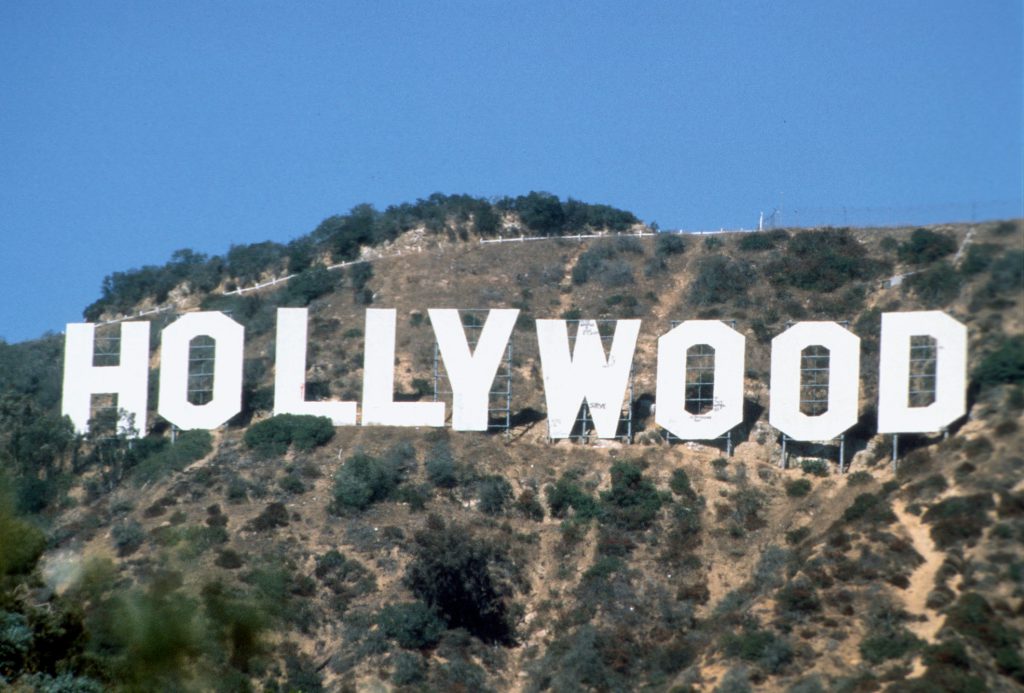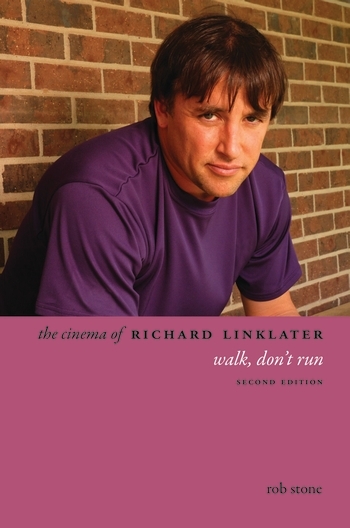“For Hollywood and Miss Sharon!” Cinetextuality in Quentin Tarantino’s Once Upon a Time…in Hollywood
By Ron Wilson

Quentin Tarantino’s Once Upon a Time… In Hollywood has garnered plenty of attention as a strong contender at the Oscars this weekend. To better understand the buzz, Ron Wilson, author of a forthcoming volume on Tarantino for the Directors’ Cuts series joins us on the blog today with this discussion of the cinetextuality in Tarantino’s latest film.
• • • • • •
Tarantino’s acceptance remarks at the 31st Palm Springs International Film Festival when presented with the Director of the Year award emphasized the importance of the cinema-going experience in a world where the concept of instant gratification now extends to domestic screen viewing on a variety of platforms. The director has constantly stressed the importance of film formats (35mm and 70mm) over digital ones not only with the production of films but most importantly, for him, the true theatrical experience of viewing a film as a communal one with the format itself being an integral part of that experience. This is part of Tarantino’s cinephilia (“love of cinema”) a cinephilia that also extends to the aural and visual content of his films and is a significant aspect of his auteurism. Nowhere is this cinephilia better displayed than in the 9th film by Quentin Tarantino, Once Upon a Time…in Hollywood.
A distinct trait of Tarantino’s cinephilia is that he puts it to practice in his films, which are replete with visual and aural references and allusions to numerous films and television shows that the director holds dear. This practical use of cinephilia typically takes the form of what I call cinetextuality, where the intertextual referencing is film specific. Intertextuality in film has been analyzed in the works of several directors – Jean-Luc Godard and Akira Kurosawa being among them. But this intertexuality usually takes the form of literary and cultural references. For Tarantino cinetextuality becomes an important part of the film’s overall concept. The literally hundreds of references to Asian action cinema in Kill Bill and the use of faux trailers and intentional degradation of the film image in Grindhouse are only two examples. Once Upon a Time…in Hollywood, though not as extreme an example, nonetheless uses particular and strategic cinetextual referents that are there for a distinct purpose. I would like to take the time in this post to help elucidate the one cinetextual moment that was particularly effective for me.
“For Tarantino cinetextuality becomes an important part of the film’s overall concept. The literally hundreds of references to Asian action cinema in Kill Bill and the use of faux trailers and intentional degradation of the film image in Grindhouse are only two examples.”
Most reviews of Once Upon a Time commented on its nostalgic view for the late 1960s and the film being like a “love letter to Hollywood” without addressing the particular moments in the film where this occurred and where it served to enlighten the director’s overall purpose. The cinetextual moment where this happened for me, and that as soon as it occurred put the entire film in perspective was the aural reference that Tarantino uses at the very end of the film. This is where Rick Dalton (Leonardo DiCaprio) enters the gates to Sharon Tate’s residence after the violent dispatch of some of Manson’s cult followers. It is the moment in the film where Tarantino indulges in his alternative history, in much the same way that he did in Inglourious Basterds. The camera cranes above the gates as we watch Rick being greeted by Sharon and others and over the image and through the end credits Tarantino uses a music cue (the “Lillie Langtry” theme) from John Huston’s The Life and Times of Judge Roy Bean. This is only one of a couple of film score cues (the director also uses a brief section from Bernard Herrmann’s unused score for Torn Curtain in the Spahn Ranch sequence) utilized in the film that is dominated by selections from 1960s AM radio – specifically pop music of 1969. It is also unusual in that Huston’s film was released in 1972 postdating the events in Tarantino’s film. But as part of the creative palette of cinetextual referents at Tarantino’s disposal it is purposeful and significant.
“The film is indeed a fantasy or mythologizing of the American West in an almost parodic fashion.”
The Life and Times of Judge Roy Bean was released in late 1972 and starred Paul Newman as well as a host of cameos by stars such as Anthony Perkins, Tab Hunter, Stacy Keach and Ava Gardner. It is different from most films by John Huston in that the screenplay was written by John Milius and was not an adaptation (the literary adaptation was the narrative form that Huston excelled at typically contributing to the screenplay itself – The Maltese Falcon, Red Badge of Courage, Under the Volcano etc.) Huston described Roy Bean as a “fantasy” (this at a time when the revisionist western was becoming the norm); whereas, Milius (disappointed at what Huston did with his script) called the end result a “Beverly Hills western” (an assessment that was no doubt informed by the musical interlude about half way into the film with the saccharine title, “Marmalade, Molasses, and Honey” sung by Andy Williams no less). The film is indeed a fantasy or mythologizing of the American West in an almost parodic fashion. It is also a western that was released when the western itself as a film genre was a dying breed – so Huston uses the time period (1897-1914 roughly) to encapsulate the transition from savagery to civilization in a nostalgic and humorous way.
This nostalgia becomes most evident in the final scene when the 19th century actress, Lillie Langtry (Ava Gardner) visits the West Texas town of Langtry, the former jurisdiction of the notorious Judge Roy Bean. The reading of a letter left to her by her ardent admirer, the Judge himself, is underscored by composer Maurice Jarre’s poignant and nostalgic theme. The moment in the film creates a paean for lost innocence and an almost forgotten way of life – a way of life that has been romanticized as the American West in both fiction and film. Yet, Huston also uses it to comment on the very nature of celebrity culture itself in a very unique way, by having Ava Gardner (a vestige of Classical Hollywood) portray Lillie Langtry (a vestige of the 19th century American stage) reading what basically constitutes a fan letter.
Tarantino uses the music cue to end Once Upon a Time…in Hollywood in a similar way – as a paean to a Hollywood that never existed. As we see Sharon greet Rick Dalton we know that she has been saved from the tragic events that awaited that night and Tarantino has created a different fate (which we have just witnessed) for her real-life killers. The cinephilic moment captures the very essence of the film’s nostalgia for a constructed past that is exemplified by the construct of Hollywood itself. The film’s “happily ever after” ending reflects its Hollywood construction that would soon change with the emergence of the New Hollywood around this same time period. The observant cineaste would do well to remember the prologue that opens The Life and Times of Judge Roy Bean. A 19th century map of Texas is shown onscreen and begins to slowly tilt askew, the camera closes in on a portion of the map revealing the Pecos River region of West Texas. The written prologue describes the territory as having “no law, no order, and only bad men and rattlesnakes live there” and then adds:
“Maybe this isn’t the way it was…it’s the way it should have been.”
Explore books from the Wallflower Directors’ Cuts series and save 30% when you order from our website by using coupon code CUP30 at checkout.
1 Response
Leave a Reply
You must be logged in to post a comment.





Finally someone got it!